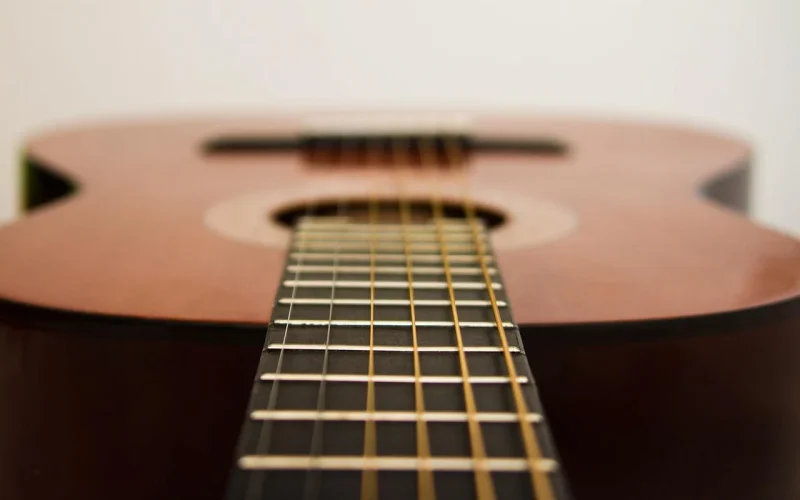There are different types of Spanish music that you can listen to as a music lover. People listen to Spanish music at cultural events because it highlights festivities, traditions, and dances.
Its message, in general, is historical and culturally significant, making it ideal for carnivals and large performances, for example.
Traditional Spanish music has long been established, preserved, and nourished at local, regional, and national.
For each sort of music listed below, I’ve included a small playlist of songs that fit the genre so you can get a feel for it.
So please read on and Enjoy!
1. Salsa
The first salsa (sauce) was created in Cuba in the 1920s as a mixture of Cuban son and rumba music. Over the decades, this early salsa absorbed various other musical influences, such as jazz, rock, and mambo, to create the modern salsa we all know and love.
This is one of the top types of Spanish music. Furthermore, Bass guitar, keyboard, bongo and conga drums, claves, maracas, a guiro or two—and maybe even a brassy orchestra—are common instruments in salsa songs.
The guiro is a dry, hollow gourd with lines carved into it that may be scraped with a stick to produce a scratchy, repetitive sound similar to a washboard. Claves are nothing more than two sticks smashed together. Follow the claves’ beat when dancing salsa.
Furthermore, the frequently romantic and poetic lyrics are ideal for language learners who want to expand their vocabulary.
2. Merengue
Merengue can be exceedingly fast—even impossible for newcomers to keep up with. Fortunately, anyone can learn the two-step, left-right-left-right dance if they have the energy to keep up with the crazy-fast beats.
This is one type of Spanish music, and it’s excellent for language learners because it covers various topics and themes, and the lyrics are frequently hilarious.
Furthermore, all you need to start a merengue party is a Tambora drum and a guira (a scraping instrument similar to the guro but made of metal).
Anyone in the Dominican Republic can tell you where this song began in the nineteenth century.
3. Bachata
Bachata is another Dominican sensation that is famous worldwide, not just in Latin America and New York City. Strangely enough, this genre has a devoted following in Japan.
This is one type of Spanish music, and it’s a smooth dance that requires a lot of hip-wiggling and foot-pop flourishes from two partners dancing close together.
In addition, the lyrics are generally overtly romantic or sexual, with themes of heartbreak and forbidden love frequently appearing.
The kind of music makes you want to belt it out tremendously dramatically, which is great for learning Spanish.
In addition, The above genres are considered to have a musical crush on merengue, while salsa represents love, and bachata means sex.
4. Reggaeton
The divisive, love-it-or-hate-it genre is unquestionably popular throughout the Spanish-speaking globe. It’s gaining traction in the United States and other nations where Spanish isn’t the primary language.
The popular reggaeton song “Despacito” recently defeated Taylor Swift to the top of the US music charts.
You and I both remember dancing our hearts out to Daddy Yankee’s “Gasolina” in middle school. Admitting it is quite acceptable.
Furthermore, Reggaeton is typically straight-up party and dance music, making it ideal for blasting loudly, dancing, and singing along. It is, in my opinion, the perfect genre for Spanish students simply because it is entertaining.
And because the music is typically highly wordy, especially between choruses, it’s ideal for learning casual Spanish, slang, and curse words.
5. Rock
Rock is a genre that most people are familiar with, and many different types of rock have made their way around the Spanish-speaking world. Thus, there are fans everywhere.
Furthermore, Spanish rock music covers iconic styles from all of America’s significant rock-and-roll decades, including the 1970s, 1980s, and 1990s—even there are angsty emo-rock bands who capture the sounds of the oh-so-edgy early 2000s.
6. Reggae
Bob Marley was a worldwide sensation, and his music, of course, touched the hearts of Latin Americans. His music may be heard everywhere, especially along the seaside, and it is one type of Spanish music.
Naturally, reggae’s popularity prompted several Spanish-speaking singers to create their kind of reggae with a Latin flavor.
As you might assume, the lyrics are mellow, and Spanish reggae musicians often sing about love, unity, world peace, and a specific weed.
Furthermore, it’s all fun, with slower-paced sing-along music for Spanish students.
7. Cumbia
This musical genre arose in Colombia and was heavily inspired by the culture and musical traditions of the country’s black population.
The hollow, clacky sound of traditionally handcrafted percussion, indigenous wind, and string instruments may be heard in any cumbia song.
This is also one type of Spanish music. These instruments are occasionally substituted with modern devices or even synthetic electronic music that imitates the sounds in current Cumbia.
Furthermore, it’s cheerful and percussive and frequently contains lyrics about life, community, and happiness. Of course, as does any musical genre, it contains its fair share of songs about love and sorrow.
While singing along to this genre, you will undoubtedly feel pleased and encouraged!
8. Vallenato
Another Colombian genre refers to the valley (valley) where cattle farmers developed it. It has a sound similar to Cumbia and has a distinct Colombian folk feel, but it incorporates an accordion and a “washboard” type sound produced by a folk instrument.
Something about a good Vallenato song gives chills, even though it’s often gooey and romantic.
9. Balada
They have a variety of sounds, with some being more pop and rock-oriented and others being more folk-oriented.
Many diverse genres can be classified as baladas, but powerful vocals and sappy, dramatic lyrics are a common denominator. This is one of the Spanish music. When you go out for a night of karaoke in Latin America, roughly 99 percent of the music in the books is karaoke.
Locals enjoy drinking beer and singing sorrowful songs as loudly and passionately as possible! So, master a handful of the biggest ballad hits and prepare for nights out on the town.
10. Musica Folklorica
Of course, “Folk Music” is a broad term that can’t possibly encompass all the different types of music in Spain.
This expression usually refers to music from indigenous cultures, at least in Latin America. Cumbia and vallenatos are excellent folk music examples, and they were created by Latin America’s more modern mestizo residents.
Every country has its own indigenous cultures, each with its languages, instruments, and musical styles, so if you start researching this genre, you can get lost in a sea of music.
Additionally, For Spanish learners, the goal is to identify folk music sung in Spanish rather than an indigenous language so that it can help them learn the language.
Furthermore, You’re all set to sing and dance to fluency in Spanish. Exposure is the key, and try out all of these genres to see which ones you like best.
Then don’t give up! Explore your favorite genres further, create playlists, burn CDs, or download them to your smartphone—do whatever you can to keep this music with you.








